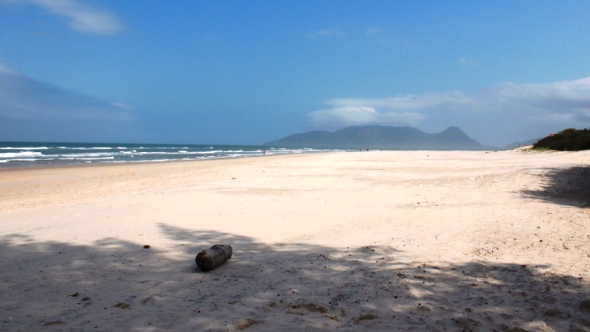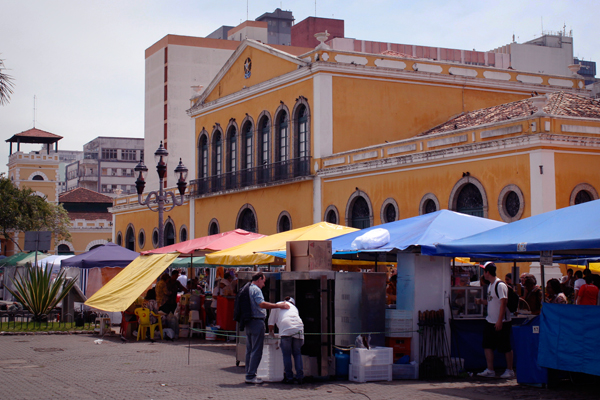Tourism in Santa Catarina: Small State, Huge Diversity
Santa Catarina is is one of the smallest States in Brazil but it’s a destination that offers a great diversity of touristic activities, from the famous Sun & Sea segment with its beautiful beaches, to cultural tourism for example.

Tourism in Santa Catarina: Small State, Huge Diversity
In terms of Sun and Sea, Santa Catarina´s most famous and most frequented destination is the capital of Florianopolis, which sits one part on the mainland and one part on the island of Santa Catarina. Florianopolis is well-known for its quality of life, being the Brazilian capital city with the highest HDI.
Billed by Valdir Rubens Walendowsky, President of Santur (Santa Catarina Tourism), as “a small State with a huge diversity”, there is no doubt that Santa Catarina is a veritable Garden of Eden. Even though, as Walendowsky admits, it is “one of the smallest, even maybe the smallest State of Brazil, accounting for only 1.2% of Brazilian territory” it is already the “destination that caters to the most market segments in Brazil”, and having just won Brazilian Travel Magazine´s Award for Best in Travel and Tourism for the sixth consecutive year, it is increasingly expanding into new areas and attracting new tourist markets all of which offers more opportunities not only for tourists but also for investors.
Joceli Cintra, Partner and Director of Açoriana Tourism, divides tourism in Santa Catarina into 7 main segments. The first one, logically is Sun and Sea Tourism which she admits is Santa Catarina´s “cash cow” and Walendowsky confirmed that “the most successful tourism segment in the world is sun and sea. It accounts for 50% of the world’s tourism. This is no different in Brazil and no different in Santa Catarina either.” However as Santa Catarina´s Sun and Sea season only lasts for 4 months, the State has diversified by marketing its other increasingly popular segments. According to Cintra, these include: Business Tourism & Events, “year-round in the State´s main cities”, Cultural Tourism, “especially religious tourism”, Adventure Tourism particularly in “the Santa Catarina mountain range, the Alto Vale Region”, Ecotourism through lifting its “State parks to the accepted standards” in order to offer parks on the same level as “Iguaçu National Park and Yosemite Park in California”, Nautical Tourism, with Santa Catarina having “the capacity to become Latin America´s principal nautical hub”, and Rural Tourism, which is being “pioneered in Brazil”.
Santur divides these segments even further adding health, as the State “has natural springs with excellent therapeutic and relaxing properties, with temperatures between 33 º C and 40 º C” and boasts “14 hydrothermal resorts, located in five tourist regions”, gastronomy, “thanks to the influence of the various European nations” and “enriched by spices and ingredients borrowed from the indigenous people and Africans”, shopping, with the most popular items being “clothing – textiles and footwear – and decor – crystal, porcelain, furniture and ceramics” and senior citizens who “have become an important segment in the tourist industry”.

In terms of the key sector of Sun and Sea, Santa Catarina´s most famous and most frequented destination is the capital of Florianopolis, which sits one part on the mainland and one part on the island of Santa Catarina, the two halves being joined by the Hercilio Luz Bridge, a massive suspension bridge measuring over 800 metres. Florianopolis is well-known for its quality of life, being the Brazilian capital city with the highest HDI (0.905) according to the UN and hailed by Brazil´s Veja (Look) magazine as “the best place to live in Brazil”. Florianopolis was awarded the Travellers’ Choice® 2012 Beach Destinations Winner by travel industry guru www.tripadvisor.com, with the website acknowledging that “Florianopolis is a thriving destination for its perfect beaches, excellent surfing, amazing seafood, and juxtaposition of a modern megacity with 16th-century colonial fortresses and relaxed markets and parks.”
Proving the State’s worth as a varied and diverse destination, the same website lists “278 things to do in Santa Catarina” and Santur has mapped the State into 10 diverse regions all offering all, some or one of these segments, not to mention wine tours, whale watching and stop-overs for cruise liners.
With all this beauty and diversity, however, Santa Catarina is still not without the infrastructure problems that are common in Brazil and as such needs investment in order to really stand out as a key international tourist destination. Walendowsky admitted this stating that “we know that, not only Santa Catarina, but all of Brazil is a privileged tourism destination, but we need better infrastructure like airports, roads, we all know this. So this is a challenge as well – to have these hindrances removed. The State continues to make a series of investments in roadways – currently, all 293 of Santa Catarina’s municipalities have at least one paved road connecting them to a major Federal or State roadway. It is the only State in Brazil where this is true. This is also an investment in tourism.”
Cintra also sees “great opportunities for international investors in tourism in Santa Catarina. Santa Catarina already has a traditional industry which has become globalized. Tourism is endeavouring but we are still not globalized to our full potential.” Talking specifically she mentions that “there are great opportunities to set up hotel chains under international flags; there are opportunities for the implementation of new event centres (which could be a public private partnership, PPP)” and adds that “the opportunity exists, due to huge lack of new modern marinas, for international know-how in this sector.” Walendowsky further highlights the need for “investments to build attractive inns, farm-hotels – as rural tourism is very strong in this region – and make the existing farms and facilities better equipped and more attractive, because the scenery is already there, and it is different from anywhere else in the world.”
Tourists and expats often comment that Santa Catarina feels more “organized” than the rest of Brazil, undoubtedly a result of its European origins, having been colonized by some “23 different ethnic groups” so even though Walendowsky admits that Santa Catarina “can never become as big in tourism as São Paulo or Rio, because we are limited by our size” it is definitely a State in which tourism is thriving, diversifying, expanding and taking the right steps to fulfill Walendowsky´s goal “to be the best touristic destination in Brazil.”